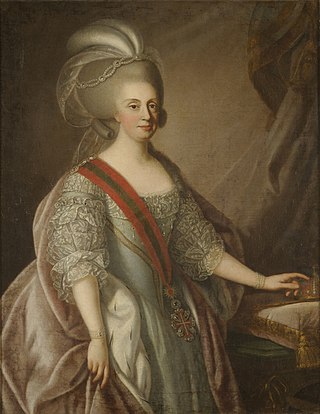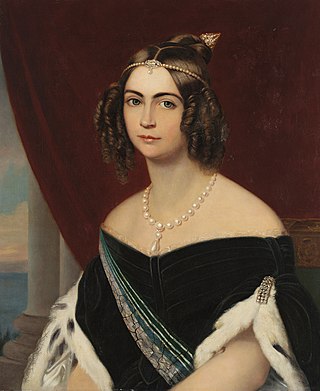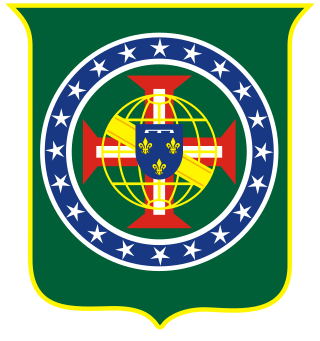Others
- Dom Pedro (card game), American card game of the All Fours family
- Dom Pedro V Theatre
- D. Pedro V High School
- The Dom Pedro aquamarine
- Steamship Wyreema renamed to Dom Pedro I
Dom Pedro (Lord Peter) is the traditional Portuguese appellation of several kings of Portugal:
and of the two 19th-century Emperors of Brazil:

DomPedro II, nicknamed the Magnanimous, was the second and last monarch of the Empire of Brazil, reigning for over 58 years. He was born in Rio de Janeiro, the seventh child of Emperor Dom Pedro I of Brazil and Empress Dona Maria Leopoldina and thus a member of the Brazilian branch of the House of Braganza. His father's abrupt abdication and departure to Europe in 1831 left the five-year-old as emperor and led to a grim and lonely childhood and adolescence, obliged to spend his time studying in preparation for rule. His experiences with court intrigues and political disputes during this period greatly affected his later character; he grew into a man with a strong sense of duty and devotion toward his country and his people, yet increasingly resentful of his role as monarch.

DomPedro I was the founder and first ruler of the Empire of Brazil. As King Dom Pedro IV, he reigned briefly over Portugal, where he also became known as "the Liberator" as well as "the Soldier King". Born in Lisbon, Pedro I was the fourth child of King Dom John VI of Portugal and Queen Carlota Joaquina, and thus a member of the House of Braganza. When the country was invaded by French troops in 1807, he and his family fled to Portugal's largest and wealthiest colony, Brazil.

Dona Maria I was Queen of Portugal from 24 February 1777 until her death in 1816. Known as Maria the Pious in Portugal and Maria the Mad in Brazil, she was the first undisputed queen regnant of Portugal and the first monarch of Brazil.

Dona Maria II "the Educator" or "the Good Mother", was Queen of Portugal from 1826 to 1828, and again from 1834 to 1853. Born in Rio de Janeiro, she was the first child of Emperor Dom Pedro I of Brazil and Empress Dona Maria Leopoldina, and thus a member of the House of Braganza. One of the two surviving children born when Pedro was still heir apparent to Portugal, she inherited Portuguese titles and was placed in the line of succession to the former Portuguese throne, even after becoming a member of the Brazilian imperial family, from which she was excluded in 1835 after her definitive ascension to the Portuguese throne.

The Most Serene House of Braganza, also known as the Brigantine dynasty, is a dynasty of emperors, kings, princes, and dukes of Portuguese origin which reigned in Europe and the Americas.
Prince of Beira is a title traditionally granted to the heir apparent to the throne of Portugal. The title's original use that it be granted on the eldest daughter of the reigning monarch of Portugal. Tied with the title of Prince of Beira, is Duke of Barcelos, as heir to the Duke of Braganza and Prince of Brazil. The title's name has its origins in the Beira province in central Portugal.

Dona Maria Leopoldina of Austria was the first Empress of Brazil as the wife of Emperor Dom Pedro I from 12 October 1822 until her death. She was also Queen of Portugal during her husband's brief reign as King Dom Pedro IV from 10 March to 2 May 1826.
Pedro is a masculine given name. Pedro is the Spanish, Portuguese, and Galician name for Peter. Its French equivalent is Pierre while its English and Germanic form is Peter.

The Imperial House of Brazil is a Brazilian dynasty of Portuguese origin that ruled the Empire of Brazil from 1822 to 1889, after the proclamation of independence by Prince Pedro of Braganza who was later acclaimed as Pedro I, Constitutional Emperor and Perpetual Defender of Brazil. The members of the family are dynastic descendants of Emperor Pedro I. Claimants to headship of the post-monarchic Brazilian Imperial legacy descend from Emperor Pedro II, including the senior agnates of two branches of the Family of Orléans-Braganza; the so-called Petrópolis and Vassouras lines. Prince Pedro Carlos of Orléans-Braganza heads the Petrópolis line, while the Vassouras branch is led by his second cousin, Bertrand of Orléans-Braganza.
Peter of Portugal is the name of several Portuguese kings and infantes:

Amélie of Leuchtenberg was Empress of Brazil as the wife of Pedro I of Brazil.

DomPedro de Alcântara of Orléans-Braganza, Prince of Grão Pará was the first-born son of Dona Isabel, Princess Imperial of Brazil and Prince Gaston of Orléans, Count of Eu, and as such, was born second-in-line to the imperial throne of Brazil, during the reign of his grandfather, Emperor Dom Pedro II, until the empire's abolition. He went into exile in Europe with his mother when his grandfather was deposed in 1889, and grew up largely in France, at a family apartment in Boulogne-sur-Seine, and at his father's castle, the Château d'Eu in Normandy.

Pedro Luiz of Orléans-Bragança was the son of Antônio of Orléans-Braganza and Christine of Ligne. His brothers were Rafael, Amélia and Maria Gabriela, he was the great-great-grandson of Princess Isabel, the last Princess Imperial of Brazil, and of the Prince Imperial consort Gaston of Orléans, Count of Eu, and great-great-grandson of Emperor Pedro II and Empress Teresa Cristina.

The House of Orléans-Braganza is a Brazilian noble house of Portuguese and French origin. who governed Brazil from 1822 to 1889 It is a cadet branch of the House of Braganza, of Portugal, and the House of Orléans, of France. The house was founded with the marriage between Isabel of Braganza, Princess Imperial of Brazil, and Prince Gaston of Orléans, Count of Eu.

Dona Paula was a princess of the Empire of Brazil and thus, a member of the Brazilian branch of the Portuguese House of Braganza. Her parents were Emperor Dom Pedro I, the first ruler of an independent Brazil, and Archduchess Leopoldina of Austria. Born in Rio de Janeiro, Paula was the couple's third child; she lost her mother at the age of three and her father at the age of eight, when he abdicated and left Brazil for Portugal, where he wanted to restore the throne of Paula's eldest sister, Maria da Glória, who should have become queen regnant of Portugal.

The Imperial Order of Our Lord Jesus Christ, simply named Order of Christ, is an order of chivalry instituted by emperor Pedro I of Brazil on 7 December 1822, on the basis of the Portuguese Order of Christ founded by King Dom Dinis and Pope John XXII in 1316–1319.

Dom Afonso was the Prince Imperial and heir apparent to the throne of the Empire of Brazil. Born in Rio de Janeiro, he was the eldest child of Emperor Dom Pedro II and Dona Teresa Cristina of the Two Sicilies, and thus a member of the Brazilian branch of the House of Braganza.

Dom Pedro Afonso was the Prince Imperial and heir apparent to the throne of the Empire of Brazil. Born at the Palace of São Cristóvão in Rio de Janeiro, he was the second son and youngest child of Emperor Dom Pedro II and Dona Teresa Cristina of the Two Sicilies, and thus a member of the Brazilian branch of the House of Braganza. Pedro Afonso was seen as vital to the future viability of the monarchy, which had been put in jeopardy by the death of his older brother Dom Afonso almost three years earlier.

Prince Peter August of Saxe-Coburg and Gotha, known in Brazil as Dom Pedro Augusto, was a prince of the Empire of Brazil and of the House of Saxe-Coburg and Gotha-Koháry. The favorite grandson of Emperor Pedro II, he was known as "the Preferred".

Luiz Gastão of Orléans-Braganza was the head of the Vassouras branch of the House of Orléans-Braganza and a claimant to the defunct Brazilian throne. The Vassouras branch claims the throne in opposition to the Petrópolis branch of the Orléans-Braganzas, headed by Pedro Carlos Orléans-Braganza. Although Luiz and Pedro Carlos respectively were and are great-grandchildren of Princess Isabel, of the House of Braganza, they disputed leadership over the Brazilian Imperial Family due to a dynastic dispute concerning their fathers, who were cousins.